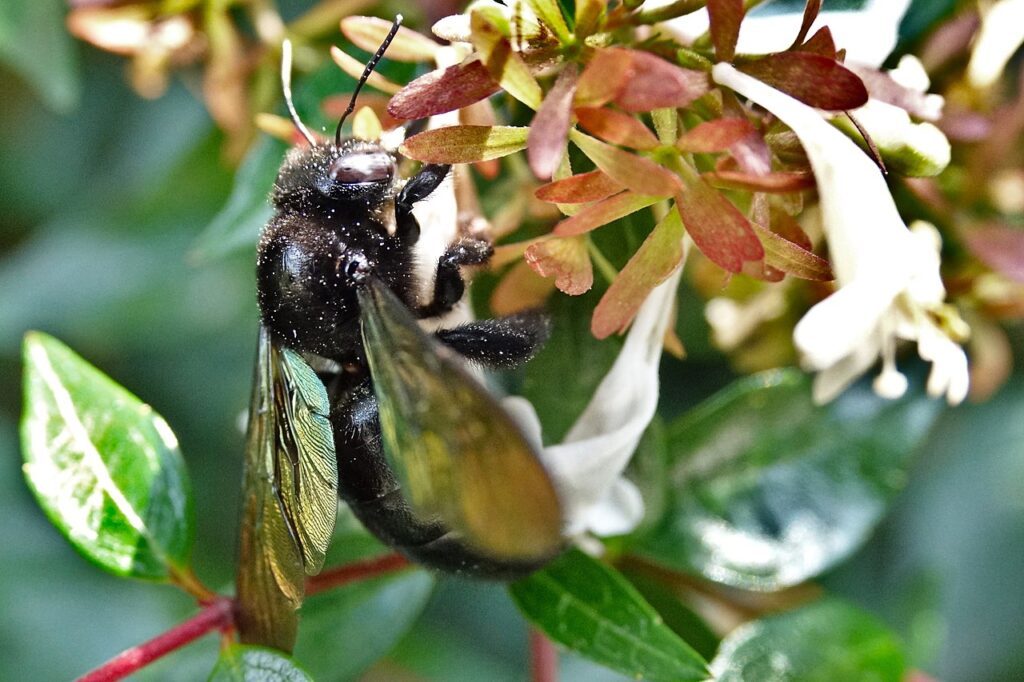
Carpenter bees (Xylocopa violacea) are often mistaken for bumblebees due to their similar size and coloration. These large bees, typically over 1 inch in length, are usually black or yellow with an oval-shaped body. Unlike bumblebees, carpenter bees are solitary and known for boring into wood to create their nests.
Appearance and Nesting Habits of Carpenter Bees
Carpenter bees have a distinctive appearance, often all-black or sometimes yellow. They create small, round nest openings in wood, approximately ½ inch in diameter. Once the female bores into the wood, she creates a tunnel that turns 90 degrees and extends 4 to 6 inches with the grain of the wood. Inside, the female constructs individual brood cells, laying an egg on a pollen and honey mixture that serves as food for the larvae. The entire life cycle, from egg to adult, takes 1 to 3 months.
Behavior
Carpenter bees prefer untreated or weathered wood, often targeting eaves, decks, and outdoor furniture. They can cause minor structural damage over time, especially if multiple generations reuse the same nesting area. Homeowners typically notice round holes the size of a dime on wooden surfaces, along with hovering bees near the nesting site. The Valley Carpenter Bee, found in California, features tan-colored males and black females.
Carpenter Bees and Their Role in Pollination
Carpenter bees are significant pollinators, similar to bumblebees. They are generalists, visiting a wide variety of flowers, especially in early mornings. Known for “buzz pollination,”They use their strong thoracic muscles to vibrate flowers, dislodging dry pollen grains from the anthers. This unique method of pollination makes them effective at pollinating crops like eggplants, tomatoes, and other vegetables. While sometimes they steal nectar without pollinating, their overall contribution to ecosystems and gardens remains vital. Read more about these fascinating pollinators here.
Threats and Control
While male carpenter bees cannot sting, females will sting if threatened. However, they are generally non-aggressive. To control an infestation, it’s important to treat the affected wood with insecticide and plug the nest holes to prevent re-entry. Regular maintenance and sealing of exposed wood surfaces can help deter Them from nesting.
If you suspect a carpenter bee infestation, it’s best to contact a pest control professional to safely and effectively address the problem. Contact us today to schedule an inspection and take the first step towards a bee-free environment!
